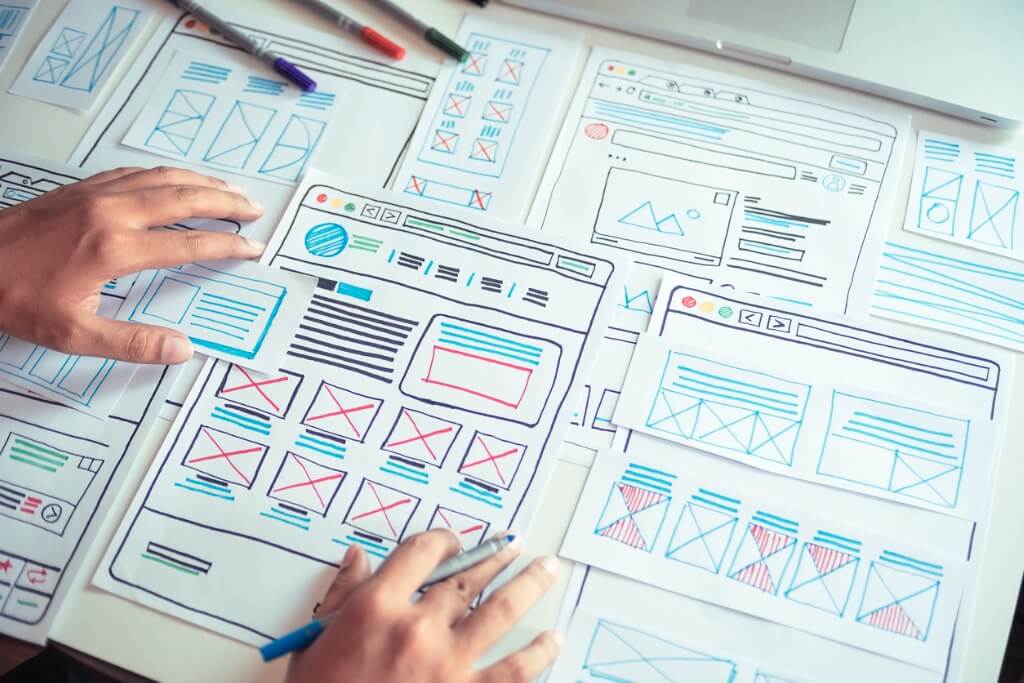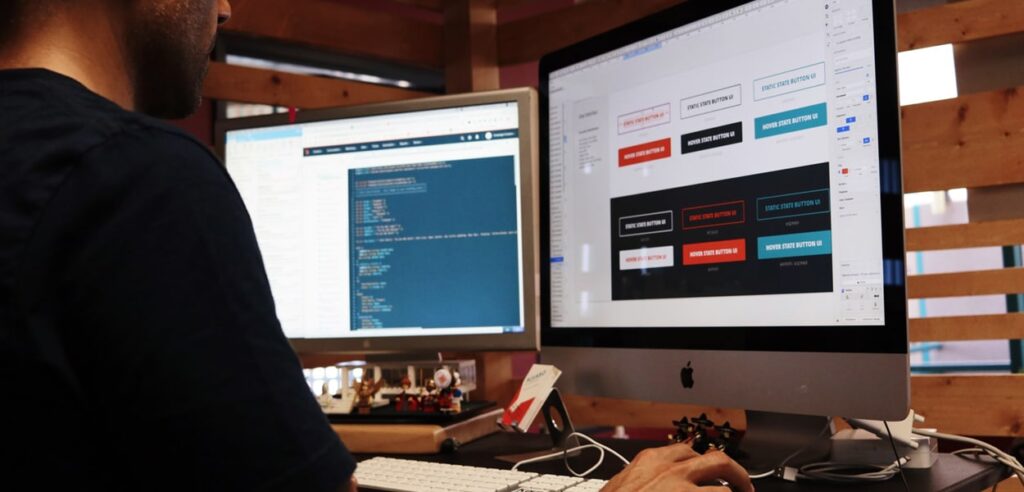
Web design is a complex process that requires creative and technical skills to turn an idea into reality. Imagine, to put together bit and pieces of idea into a platform where potential customers can engage with the product or services, requires special skills and planning.
A skilled web designing company, simply doesn’t jump into the action. Rather, they plan everything to the core to ensure that final product exceeds the expectations of the customer and the owner.
Even though every website has its own unique requirements and needs, but in this article, we will cover some general stages of web design process that if understood well can be easily applied to any project.
In this blog post, we’ll explore the four stages of the web design process, from concept to completion. By understanding these stages, you’ll be in a better position to create successful websites for yourself and your clients. So, let’s get started!
1. Creating a wireframe design, putting ideas into paper
Wireframing is the process of taking your website design ideas and turning them into a visual representation. Now, every designer has their own set of preferred tools and platforms like Canva or Figma, which they use to give a graphical representation of the ideas. However the main aim of this step is to give a hint to the customer so that he can share his inputs based on his business idea.
Once you have your wireframes completed, it’s time to put them into paper (or screen, as the case may be). This can be done by creating a mock-up of your website design, or by using a program like Adobe Photoshop to create a more polished version of your wireframes. This is not an exact copy of how the website will look but very close idea to how things will emerge once the final content is added to the site.
No matter how you choose to put your ideas into paper, the important thing is that you take the time to do it. Wireframing is an essential part of the web design process and will help you ensure that your final product is exactly what you envisioned.
2. Finalizing the design, Analysing and mapping the user experience
The final stage of the web design process is to analyse and map the user experience. This helps you to understand how users interact with your site and identify any areas where they may have difficulty.
This is a great step where you can actually put yourself into a customer shoe and track their journey.
You can analyse how many steps a user has to take to reach to the core information, you can see if your call-to-action is visible to the customer. So, you can proof test your design on various mobile screens also to check its responsiveness.
By mapping the user experience, you can make sure that your site is easy to use and provides a great experience for all users because in the end only those users will interact with the website who will find it engaging.
3. Development, putting codes to the design
Development is the process of putting codes to the design. A developer takes the design created by a designer and develops it into a working website, applying all the necessary code and functionality.
A typical development process involves taking a PSD (Photoshop Document) file or other design file created by a designer, and converting it into a working website. This usually starts with creating HTML files from the design, then adding CSS to style those pages, and finally adding JavaScript or other functionality to make the site interactive.
The development process can be complex, especially for large or custom websites. But following a few simple steps can help make it go more smoothly:
1. First, get an accurate estimate of how much work is involved. This will help you set realistic expectations and avoid scope creep.
2. Create a development roadmap that outlines the tasks that need to be completed and when they need to be done by. This will help keep you on track and ensure that nothing gets forgotten.
3. Start coding!
4. Test your work regularly to catch any bugs or errors early on.
5. Get feedback from others throughout the process – this can help point out any areas that need improvement or clarification.
6. Launch your new website and celebrate!

4. Rigorous testing or both stimulator and actual devices
Web design is a process that involves several different stages, from planning to creating the actual website. One of the most important stages is testing, which helps ensure that the website will function properly and meet the needs of its users.
There are two types of testing that are typically used in web design: rigorous testing of the stimulator devices, and actual devices. Stimulator testing is typically done using software that simulates how users will interact with the website.
This can be helpful in identifying potential problems with the website before it goes live. Actual device testing is done using actual devices, such as smartphones and tablets. This type of testing can help identify any issues that may not have been apparent during stimulator testing.
Both types of testing are important in ensuring that a website is functional and user-friendly. Rigorous testing of both stimulator and actual devices can help identify any potential problems with a website before it goes live, ensuring a smooth user experience for all.
Conclusion: According to us, web site designing is task of great responsibility. A huge percentage of success or a failure of a business depends upon how the website is built and operated. Therefore, make sure that you are involved actively at each step of the web development.


























